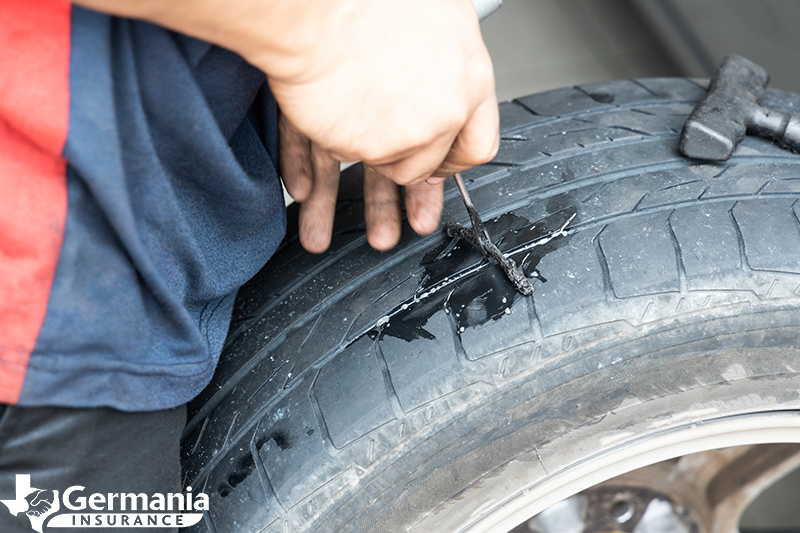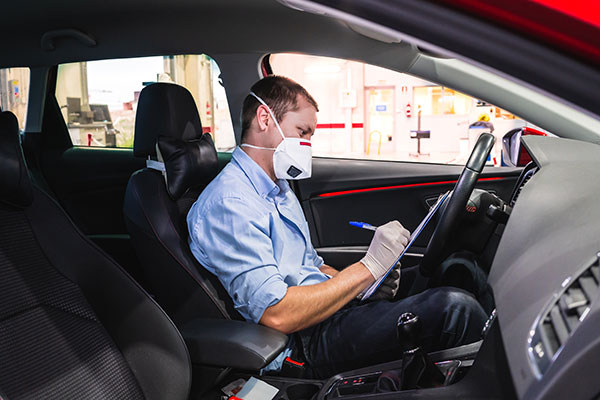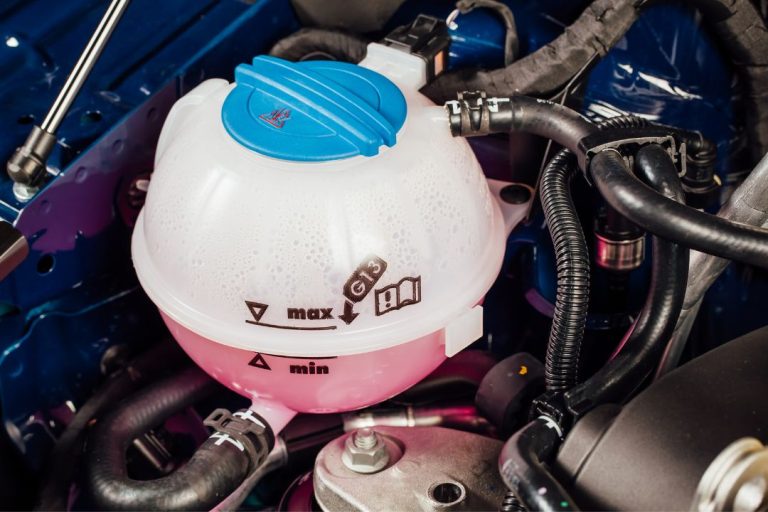What Do I Do When I Get a Flat Tire: Quick Fixes & Expert Advice
If you get a flat tire, slow down, pull over, and find a safe location to fix it promptly. A flat tire can be resolved with proper tools, a spare tire, and knowledge on how to change a tire.
Knowing what to do in the situation of a flat tire can save you time, money, and ensure your safety on the road. We will explore step-by-step instructions on how to handle a flat tire efficiently. From assessing the damage, replacing a tire, to getting back on the road, being prepared can make a significant difference in such a common roadside emergency.
Let’s dive into the essential steps and tips for handling a flat tire effectively.

Credit: germaniainsurance.com
1. Understanding Flat Tires: Causes And Consequences
Introductory paragraphFlat tires can be a frustrating experience for any driver, but understanding the causes and consequences are crucial for handling this situation effectively. By recognizing the signs of a flat tire and being aware of the potential dangers of driving on one, you can minimize risks and ensure your safety on the road.
H3 Heading 11.1 Recognizing A Flat Tire
H3 Heading 21.2 Consequences Of Driving On A Flat Tire

Credit: www.rei.com
2. Quick Fixes For Flat Tires: How To Handle The Situation
Dealing with a flat tire can be a stressful situation, especially if it happens unexpectedly. Knowing how to handle the situation efficiently can save you time and frustration. Here are some quick fixes for flat tires that can help you get back on the road safely:
2.1 Pulling Over Safely
When you realize you have a flat tire, slow down, flash your emergency lights, and pull over immediately. It’s crucial to find a flat spot with ample space for safety and convenience. This will give you the necessary room and time to address the flat tire without endangering yourself or other drivers on the road.
2.2 Temporary Solutions: Putting Air In The Tire
If you have a portable air compressor or access to a gas station with an air pump, inflate the flat tire to a safe pressure level to help you drive to a repair shop or a safer location. This temporary solution can prevent further damage to the tire and allow you to continue your journey until a proper fix can be made.
2.3 Using A Flat Tire Repair Kit
Having a flat tire repair kit handy can be a lifesaver in situations like this. A tire repair kit typically includes tools and materials such as a reamer, plugs, and adhesive to patch up the puncture. By following the instructions provided with the kit, you can effectively repair the flat tire and get back on the road with minimal hassle.
3. Expert Advice: Fixing A Flat Tire Correctly
When it comes to fixing a flat tire, it’s crucial to follow proper procedures to ensure your safety and the longevity of your vehicle. Below, we will discuss expert advice on fixing a flat tire correctly, including changing the spare tire safely, using an air compressor for inflation, assessing the tire damage, and knowing when to replace tires.
3.1 Changing The Spare Tire Safely
If you encounter a flat tire, changing the spare tire safely should be your first priority. Use the following steps to ensure a safe and effective tire change:
- Find a safe, flat area to park your vehicle, away from traffic.
- Engage the parking brake and place wheel wedges behind the tires to prevent rolling.
- Use the jack to lift the vehicle, and then remove the lug nuts and flat tire.
- Mount the spare tire onto the wheel hub and tighten the lug nuts in a star pattern.
- Lower the vehicle, remove the jack, and double-check the lug nuts’ tightness.
3.2 Using An Air Compressor For Inflation
After fixing a flat tire, you may need to reinflate it. Using an air compressor correctly is vital for a successful inflation process. Follow these steps:
- Connect the air compressor to the tire’s valve stem and turn it on.
- Monitor the pressure gauge to reach the desired tire pressure.
- Once the tire is appropriately inflated, turn off the air compressor and remove it from the valve stem.
3.3 Assessing The Tire Damage
When facing a flat tire, it’s essential to assess the extent of the damage before deciding on the appropriate repair. Look for punctures, cuts, or nail penetrations and determine if the damage is reparable or if a replacement is necessary.
3.4 Knowing When To Replace Tires
Understanding when to replace tires is critical for your safety on the road. Factors such as tread wear, cracks, bulges, and tire age can affect their performance. It is recommended to replace tires when the tread depth reaches 2/32 inches or if you notice any signs of damage.

Credit: m.facebook.com
4. Diy Videos: Step-by-step Guides For Flat Tire Repair
When you find yourself with a flat tire, it can be a frustrating situation. But don’t worry, you don’t have to be a certified mechanic to fix it. With the help of DIY videos, you can easily learn how to repair a flat tire step-by-step. These videos provide clear instructions and visual demonstrations, making it easy for anyone to follow along and get back on the road in no time. Here are three tutorial videos that can guide you through different methods of flat tire repair:
4.1 Tutorial 1: Changing The Spare Tire
If you have a spare tire in your vehicle, changing it is often the quickest and easiest solution. In this tutorial video, you’ll learn how to safely replace your flat tire with a spare tire. Pay close attention to the steps, as proper installation is crucial for your safety on the road. Here’s what you’ll find in the video:
- Introduction
- Air Pump
- Change the Spare Tire
- Check Your Spare Tire Pressure
- Remove the Tire
- How to Check for Corrosion
- How to Remove a Wheel
- Removing the Reamer
- Mount the Tire
- Outro
4.2 Tutorial 2: Using A Tire Repair Kit
If you don’t have a spare tire or prefer to repair your flat tire instead of replacing it, a tire repair kit can come in handy. This tutorial video will guide you through the process of using a tire repair kit effectively. Take note of the necessary tools and techniques to ensure a successful repair. Here’s what you’ll discover in the video:
- Introduction
- Change the Tire
- Install the Spare Tire
- Portable Air Compressor
- Inspect the Tire
- Tire Repair Kit
- Ream the Hole
- Remove the Plug Tool
- Valve Stem Leaks
- Conclusion
4.3 Tutorial 3: Plugging A Flat Tire
Plugging a flat tire is another method you can use to get yourself moving again. This tutorial video demonstrates how to plug a flat tire easily. By following the steps in this video, you can effectively repair your tire and avoid the hassle of replacing it. Here’s what you’ll learn in the video:
- Find the Leak
- Use the Reamer to Smooth Out the Hole
- Fill the Tire with Air
Now that you know about these informative tutorial videos, you have the power to repair your own flat tire. Choose the method that suits your situation best and confidently follow the step-by-step instructions. Remember, being prepared and knowing what to do in case of a flat tire can save you time, money, and frustration on the road.
5. Common Faqs: Addressing Flat Tire Concerns
Upon experiencing a flat tire, slow down, activate your emergency lights, and pull over safely. Find a flat area with ample space to address the issue. Driving on a flat tire can compromise safety and lead to costly repairs, so it’s best to act quickly and assess the situation.
Dealing with a flat tire can be a frustrating experience, but knowing how to handle the situation can make all the difference. In this section, we will address some common FAQs related to flat tires, providing you with the information you need to confidently navigate this unexpected obstacle.
5.1 Can You Drive On A Flat Tire?
Driving on a flat tire is strongly discouraged as it can lead to further damage to your vehicle and compromise your safety on the road. When you notice a flat tire, it is essential to pull over to a safe location as soon as possible. Continuing to drive on a flat tire can cause the tire to shred or even result in a blowout, increasing the risk of an accident. Remember, the flat tire should be addressed promptly to ensure your safety and prevent additional damage.
5.2 Replacing Tires: Do’s And Don’ts
When it comes to replacing tires, there are some do’s and don’ts to keep in mind. First and foremost, it is advisable to replace a flat tire rather than attempting to repair it, especially if the damage is significant or the tire is old. A professional tire technician can assess the condition of the tire and determine if it is repairable or needs replacement. Additionally, it is crucial to replace all damaged tires simultaneously to maintain balanced performance and handling. Mixing new and old tires can lead to uneven wear and affect the overall stability of your vehicle.
Do:
- Check the tread depth regularly and replace tires if the tread is worn.
- Choose tires that are appropriate for your vehicle and driving conditions.
- Follow the recommended tire rotation schedule to ensure even wear.
Don’t:
- Ignore the signs of tire damage, such as bulges, cracks, or punctures.
- Replace only one tire and leave others that may be damaged.
- Attempt to replace tires without the necessary equipment or expertise.
5.3 Seeking Professional Help
While it may be tempting to tackle a flat tire repair or replacement on your own, seeking professional help is often the safest and most efficient option. Tire technicians are trained to handle and repair tires correctly, ensuring that your vehicle is roadworthy and safe. They have the necessary tools, expertise, and access to a wide range of tire options to meet your specific needs. When it comes to the well-being of your vehicle and your own peace of mind, it’s best to trust the professionals.
Frequently Asked Questions Of What Do I Do When I Get A Flat Tire
What Should I Do If I Have A Flat Tire?
If you have a flat tire, safely pull over, turn on hazard lights, find a flat area, and assess the situation promptly.
Is It Ok If I Drive With A Flat Tire?
Driving with a flat tire can reduce vehicle handling, cause wheel damage, jeopardize safety, and lead to costly repairs. Pull over immediately to a safe location to assess.
Can I Put Air In A Flat Tire?
Yes, you can put air in a flat tire if the hole is in the tread. However, if the hole is in the sidewall, you need to change the tire.
Do You Have To Replace All Tires When You Get A Flat?
Replace a flat tire with a new one. It is important for safety and to maintain proper handling of the vehicle.
Conclusion
In the unfortunate event of a flat tire, remember to stay calm and pull over safely. Ensure that you have enough space to work on your tire. Remember that driving on a flat tire is not safe and may cause further damage.
When in doubt, seek professional help to prevent any additional problems. Always prioritize safety in such situations.







